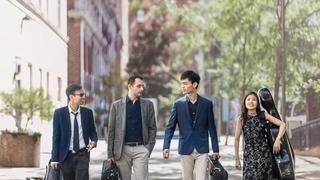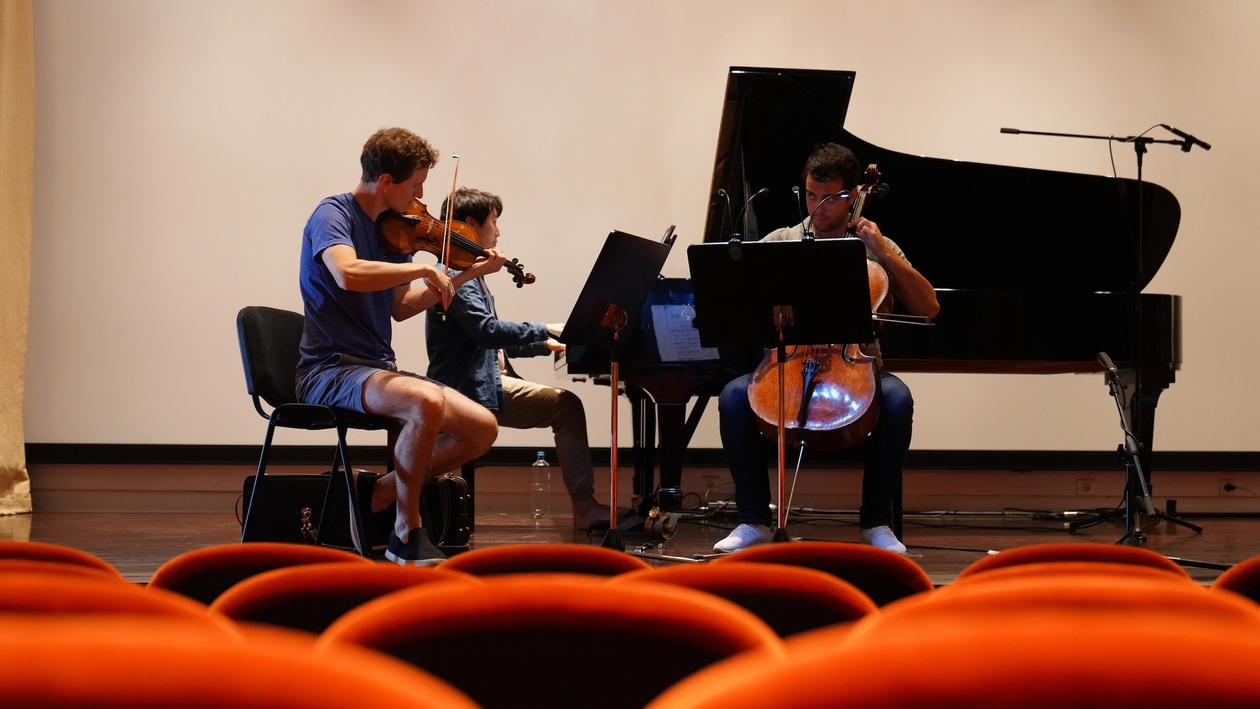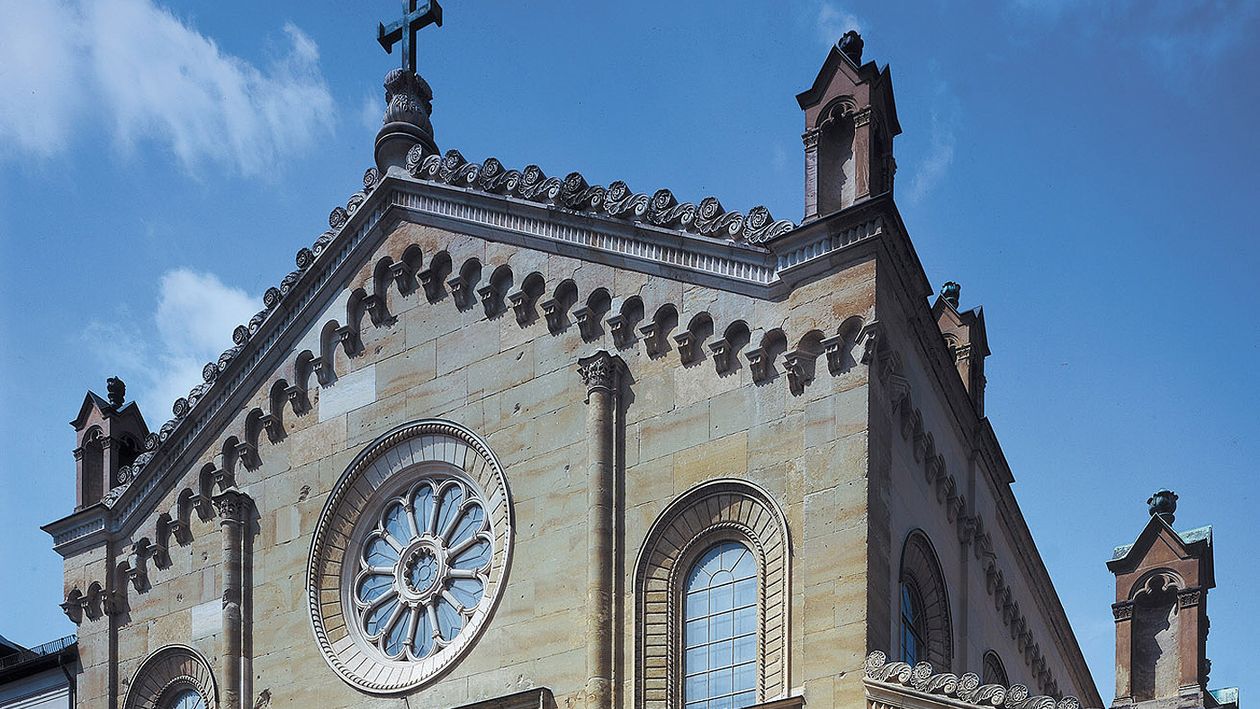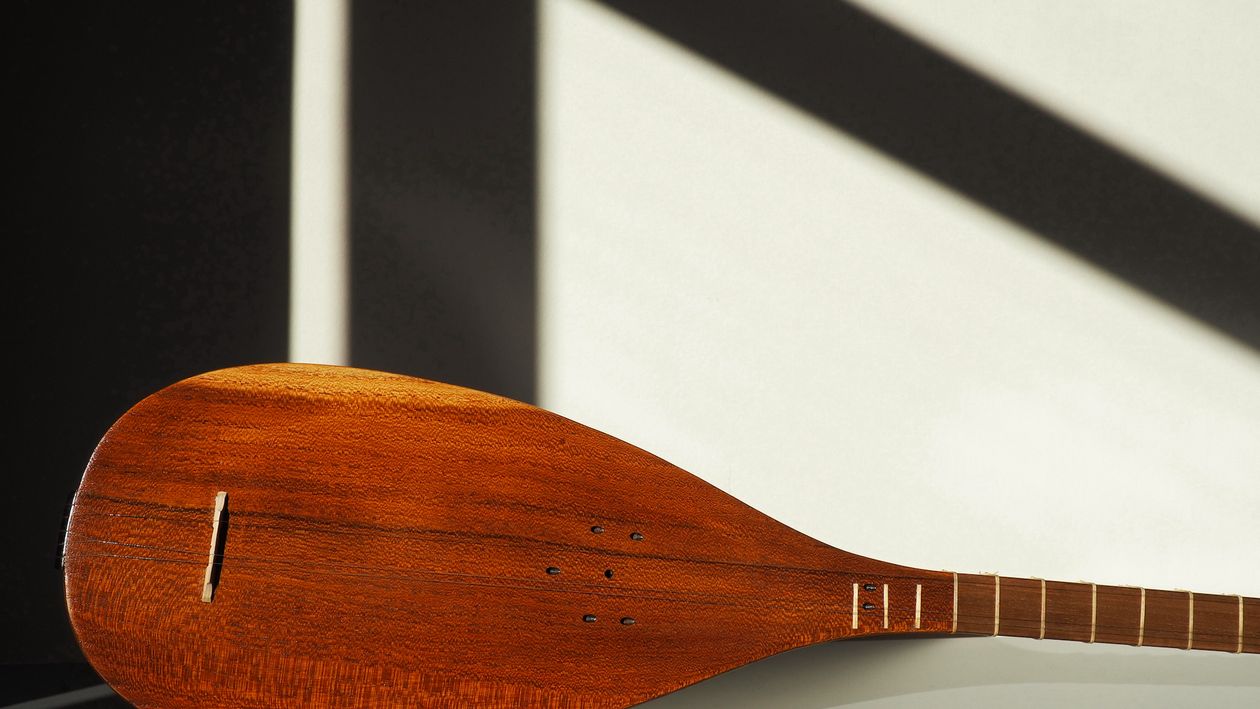
Curtis on Tour Munich 2018


- Friday, May 25
Zorá String Quartet Curtis on Tour Munich 2018
About the Quartet
- The Zorá String Quartet is in its second season as quartet in residence at the Curtis Institute of Music. In 2016–17, the quartet debuted with Curtis on Tour, gave recitals in New York and Washington, D.C. on the Young Concert Artists Series, and performed throughout the U.S. In 2017–18 the ensemble tours the United States with clarinetist David Shifrin and tenor Dominic Armstrong as part of Curtis on Tour; debuts at London’s Wigmore Hall and Boston’s Isabella Stewart Gardner Museum; and performs with violist Roberto Díaz and cellist Peter Wiley on the Philadelphia Chamber Music Society series. The Zorá String Quartet won the grand prize and gold medal at the 2015 Fischoff National Chamber Music Competition; first prize and several concert prizes at the 2015 Young Concert Artists International Auditions; and the Coleman National Chamber Music Competition. In 2016 the quartet participated in the Chamber Music Society of Lincoln Center’s Chamber Music Encounters program, concluding with a performance at Alice Tully Hall, and appeared at Chamber Music Northwest and the Oregon Music Festival. The group has also participated in chamber music residencies at the Banff Centre (Canada); in the Norfolk Chamber Music Festival (Connecticut); and in the Advanced Quartet Studies program of the Aspen Music Festival, where they worked intensively with Earl Carlyss, the Takács Quartet, the Pacifica Quartet, and the American String Quartet. The Zorá String Quartet previously served as graduate quartet in residence at the Jacobs School of Music at Indiana University, working with the Pacifica Quartet and Atar Arad. In 2014 the ensemble was string quartet in residence at the Beethoven-Haus in Bonn, Germany. The name “Zorá,” means “sunrise” in Bulgarian. The quartet's members are violinists Dechopol Kowintaweewat and Hsuan-Hao Hsu, violist Pablo Muñoz Salido, and cellist Zizai Ning.
About the Composer
- Andrew Hsu is a critically acclaimed pianist and award-winning composer. Writing music characterized as “an amorphous cloud of dissonance, slow and vibrating” (New York Times) and “deliciously atmospheric, pulseless” (Oregon ArtsWatch), his compositions have been performed across the United States, including festivals such as the Aspen Music Festival and School, Chamber Music Northwest, the Gilmore International Keyboard Festival, Music from Angel Fire and the Tanglewood Music Center. A 2014 Gilmore Young Artist, his pianism has been noted for his “incendiary account[s]” (New York Times) and “[channeling] Horowitz right down to the brilliant-yet-delicate high-treble sonority” (Philadelphia Inquirer). Hsu is a recent recipient of the 2017 Charles Ives Scholarship from the American Academy of Arts and Letters and the 2016 Hermitage Prize from Aspen. He was selected as one of seven participants of the Minnesota Orchestra Composer Institute in November 2017. In April 2016, Jeffrey Milarsky and the Juilliard Orchestra gave the first performance of Hsu’s orchestral tone poem vale in Alice Tully Hall at Lincoln Center as the recipient of the 2016 Arthur Friedman Prize at The Juilliard School. His compositions have collectively received numerous honors over the years, including several ASCAP Morton Gould Young Composer Awards and a BMI William Schuman Prize. Upcoming projects include commissions for clarinetist Yoonah Kim, harpist Héloïse Carlean-Jones and violinist Angelo Xiang Yu. In Summer 2015, Hsu was invited to the exclusive New Fromm Players at Tanglewood, performing many works by living composers. He performed in the 2015–16 Gilmore Rising Star Series, and has appeared on the the stages of Alice Tully Hall, Carnegie Hall, the Kennedy Center, the Kimmel Center and Seiji Ozawa Hall, among others. An avid chamber musician, Hsu currently attends Marlboro Music. Hsu is a C.V. Starr Doctoral Fellow at The Juilliard School, where he is a pupil of Matthias Pintscher. He received degrees from the Curtis Institute of Music and Juilliard, where he held the Rising Star Annual and Kovner Fellowships and his mentors included pianists Gary Graffman and Eleanor Sokoloff, and composers Samuel Adler, Richard Danielpour, David Ludwig and Steven Stucky. He was a recipient of a Williamson Foundation for Music Grant in 2013 and 2014.
About the Work
- kenopsia: n. the eerie, forlorn atmosphere of a place that’s usually bustling with people but is now abandoned and quiet—a school hallway in the evening, an unlit office on a weekend, vacant fairgrounds—an emotional afterimage that makes it seem not just empty but hyper-empty, with a total population in the negative, who are so conspicuously absent they glow like neon signs. (John Koenig, The Dictionary of Obscure Sorrows, used with special permission from the author) Loneliness is a fundamental human emotion, common to all—after all, our individual selves are separated by physical space. Outside of our societal norm are the inevitable pockets of isolation dispersed between the episodes of social contact: when we wonder the meaning of our existence, or if we are alone in this universe, or whether we will wake up the next morning. Without this crucial proof of the existence of thought and self-consciousness, how do we even know ourselves? A kenopsiac, then, is one who sees oneself in the darkness, glowing to fill in the empty space. Humanism and brotherhood are mere illusions, as Dostoevsky notes, and when that illusion fades, we are left with this glowing image of ourselves—a reflection of ourselves without artifice, uncovered, grotesque. Like a lighthouse strobing in the fog, it is this glowing image that we as individuals and artists must express in our work in order to be true to our sensibilities and consciousness.
About Curtis on Tour
- Curtis on Tour is the Nina von Maltzahn global touring initiative of the Curtis Institute of Music. An embodiment of the school’s "learn by doing" philosophy, it offers students real-world, professional touring experience alongside celebrated alumni and faculty. In addition to performances, musicians offer master classes, interactive programs, and community engagement activities while on tour. Curtis on Tour also facilitates solo performances of Curtis students and alumni with professional orchestras and recital series. Since the program was established in 2008, students, faculty, and alumni have performed more than 300 concerts in Europe, Asia, and the Americas.
About the Curtis Institute of Music
- The Curtis Institute of Music educates and trains exceptionally gifted young musicians to engage a local and global community through the highest level of artistry. One of the most selective schools in the United States, Curtis accepts four percent of applicants each year on average, and a tuition-free policy ensures that talent and artistic promise are the only considerations for admission. With a small student body of about 175, Curtis ensures that each young musician receives an education of unparalleled quality, distinguished by a “learn by doing” philosophy and personalized attention from a faculty that includes a high proportion of actively performing musicians. Curtis students hone their craft through more than 200 orchestras, opera, and solo, and chamber music offerings each year and programs that bring arts access and education to the community. This real-world training allows these extraordinary young musicians to join the front rank of performers, composers, conductors, and musical leaders, making a profound impact on music onstage and in their communities. To learn more, visit Curtis.edu.




